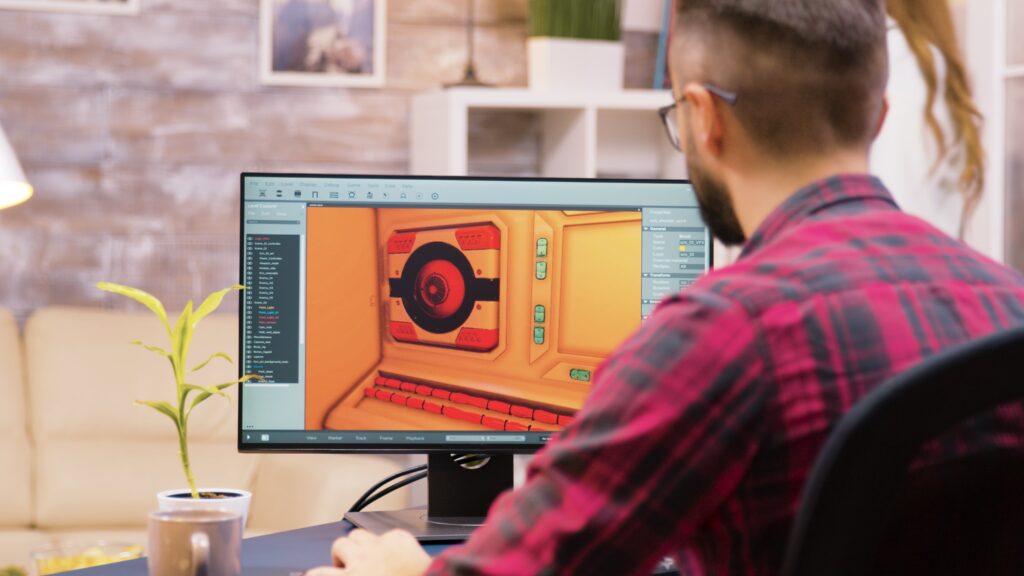User Interface Design for Games is a critical aspect of game development that directly impacts the player’s experience. From creating intuitive menus to designing engaging HUD elements, user interface design plays a vital role in ensuring that players can easily navigate the game and interact with its various features.
In this comprehensive guide, we will discuss about user interface design for games, exploring its importance, key principles, best practices, and career opportunities in this exciting field.
Importance of User Interface Design in Games
User interface design in games is crucial for several reasons. First and foremost, it serves as the primary means of communication between the game and the player. A well-designed user interface can enhance the overall gameplay experience by providing clear feedback, guiding players through various tasks, and improving the overall usability of the game.
Moreover, user interface design can significantly impact a game’s accessibility. An intuitive and well-structured interface can make the game more inclusive and enjoyable for a broader audience, including players with disabilities or those who may be less familiar with gaming conventions.
Additionally, user interface design plays a key role in establishing the game’s visual identity and enhancing its immersion factor. By designing visually appealing menus, icons, and other interface elements that align with the game’s theme and aesthetics, developers can create a cohesive and engaging gaming experience.
Key Principles of User Interface Design for Games
When designing user interfaces for games, several key principles should be considered to ensure usability, functionality, and aesthetic appeal. These principles include:
- Simplicity: Keep the interface clean and uncluttered to prevent overwhelming the player with unnecessary information or distractions.
- Consistency: Maintain consistency in terms of layout, typography, color schemes, and interaction patterns throughout the interface to provide a cohesive user experience.
- Feedback: Provide clear and immediate feedback to the player in response to their actions, such as button presses or menu selections, to reinforce interactions and prevent confusion.
- Hierarchy: Establish a clear visual hierarchy to guide the player’s attention and prioritize important information within the interface.
- Navigation: Ensure that the navigation system is intuitive and easy to use, allowing players to move seamlessly between different sections of the game.
- Accessibility: Consider accessibility features, such as customizable controls, text size options, and colorblind modes, to make the game more inclusive for all players.
By adhering to these principles, developers can create user interfaces that are not only visually appealing but also functional and user-friendly.
Best Practices for User Interface Design in Games
In addition to following key design principles, there are several best practices that developers can employ to enhance the effectiveness of their user interfaces in games. Some of these best practices include:
- Playtesting: Conduct thorough playtesting sessions with a diverse group of players to gather feedback on the interface’s usability, clarity, and overall effectiveness.
- Iterative Design: Adopt an iterative design approach, where the interface is refined and improved based on user feedback and testing results throughout the development process.
- Mobile Optimization: If designing for mobile games, ensure that the interface is optimized for smaller screens and touch-based interactions to provide a seamless user experience on mobile devices.
- Visual Consistency: Maintain visual consistency across all interface elements, including buttons, icons, fonts, and color schemes, to create a cohesive and polished look.
- Interactive Elements: Incorporate interactive elements, such as animations, transitions, and sound effects, to make the interface more engaging and responsive to player actions.
By following these best practices, developers can create user interfaces that not only look great but also enhance the gameplay experience for players.
Career Opportunities in User Interface Design for Games
User interface design is a specialized field within the broader realm of game development, offering exciting career opportunities for talented designers with a passion for gaming and technology. Some of the key roles and career paths in user interface design for games include:
- UI Designer: UI designers are responsible for creating the visual elements of the user interface, including menus, buttons, icons, and interactive elements. They work closely with game designers and artists to ensure that the interface aligns with the game’s overall vision and gameplay mechanics.
- UX Designer: UX designers focus on the overall user experience, ensuring that the interface is intuitive, user-friendly, and accessible to a wide range of players. They conduct user research, create wireframes and prototypes, and collaborate with cross-functional teams to optimize the interface’s usability and effectiveness.
- Interaction Designer: Interaction designers specialize in designing the interactive elements of the interface, such as animations, transitions, and feedback mechanisms. They focus on creating engaging and responsive interactions that enhance the player’s immersion and enjoyment of the game.
- Game Designer: Game designers often have a hand in shaping the overall user experience, including the interface design. They work on defining game mechanics, player interactions, and interface flow to create a cohesive and engaging gameplay experience.
- UI/UX Lead: UI/UX leads are experienced designers who oversee the entire user interface design process, from concept development to implementation. They provide guidance and direction to the design team, ensure consistency and quality across all interface elements, and collaborate with stakeholders to achieve the desired design goals.
These are just a few of the many career paths available to aspiring user interface designers in the gaming industry. With the growing demand for visually appealing and user-friendly interfaces in games, there is no shortage of opportunities for talented designers to make their mark in this dynamic and creative field.
Key Takeaways:
- User Interface Design for Games is a crucial element that significantly impacts the player’s overall gaming experience. By creating intuitive and visually appealing interfaces, developers can enhance gameplay, improve accessibility, and establish a game’s identity.
- Key principles such as simplicity, consistency, feedback, hierarchy, navigation, and accessibility, along with best practices like playtesting, iterative design, mobile optimization, visual consistency, and interactive elements, play a vital role in designing effective user interfaces for games.
- For those aspiring to pursue a career in user interface design for games, various roles such as UI Designer, UX Designer, Interaction Designer, Game Designer, and UI/UX Lead offer exciting opportunities in the gaming industry.
- By honing their skills and staying updated on industry trends, designers can make a significant impact in creating engaging and user-friendly interfaces for gamers worldwide.
To further enhance your knowledge and skills in user interface design for games, consider enrolling in Yellowbrick’s “NYU Animation Industry Essentials” online course and certificate program. This comprehensive program will provide you with valuable insights, practical experience, and industry-relevant knowledge to excel in the dynamic field of user interface design for games.








